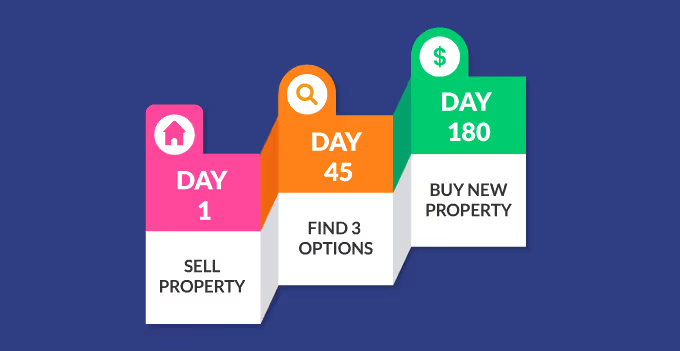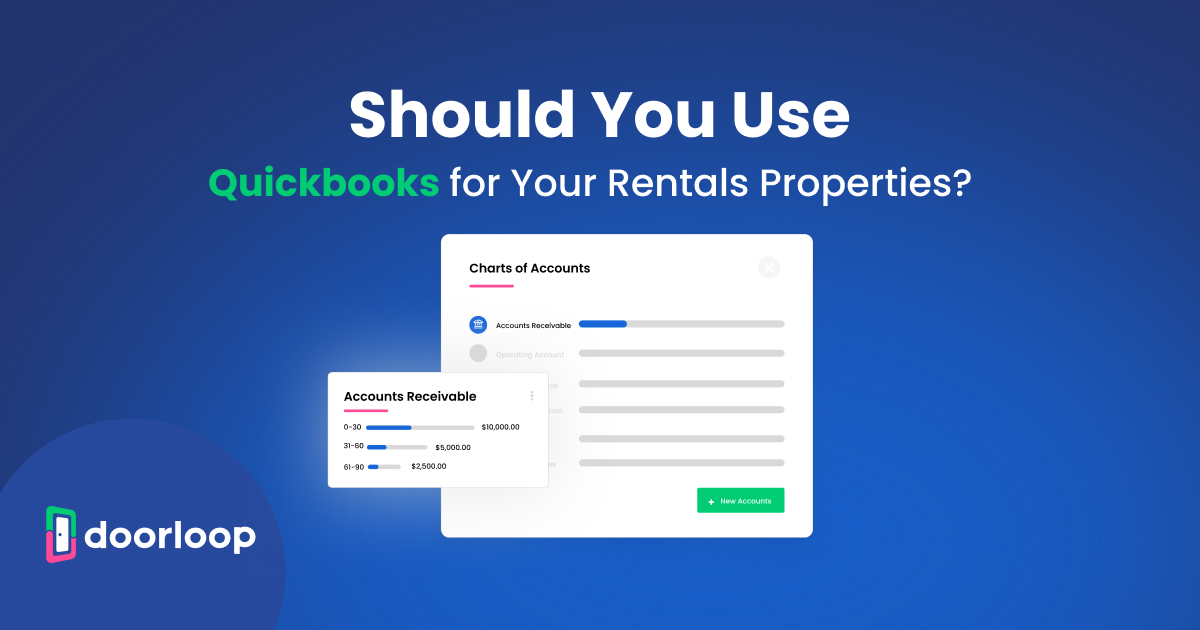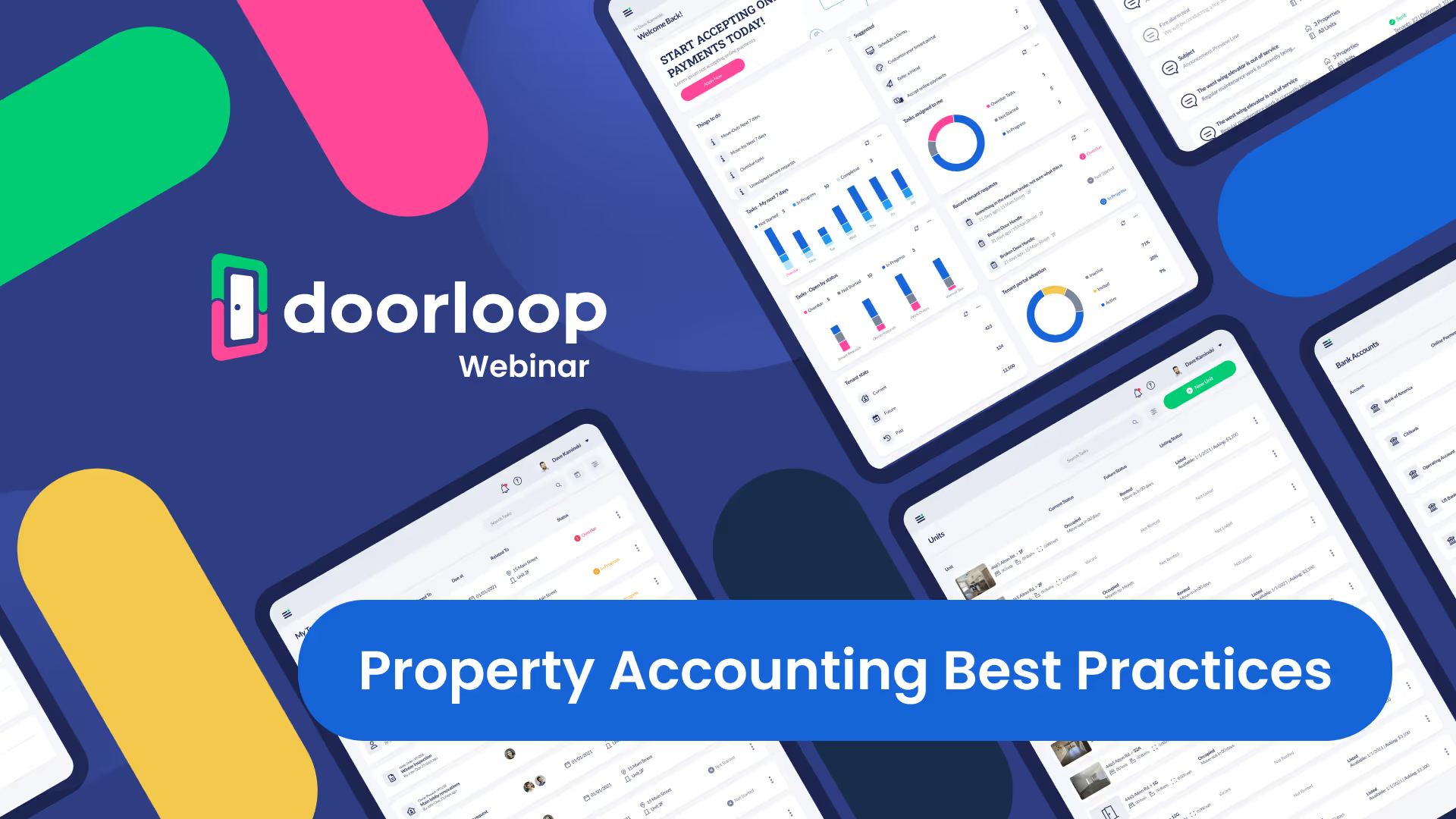Want to know more about the 1031 exchange timeline?
A 1031 exchange is a powerful tool, both for property managers who want to give added flexibility and options to their clients or those investors looking to maximize their earning potential.
But before you can take advantage of 1031 exchanges, you need to understand how they work.
And the most important aspect of that is the 1031 exchange process, or the timeline that anyone wanting to do a 1031 exchange must adhere to.
So, let’s dive into the 1031 exchange timeline, the important steps within that timeline, and key information to help you move through the 1031 process smoothly.
In this guide, you’ll learn:
- What is a 1031 exchange?
- The 1031 exchange timeline
- 3 Methods for selecting replacement property
- Guidelines for identifying a replacement property
- Other types of 1031 exchanges
- What are the benefits of a 1031 exchange?
- Is a 1031 exchange right for me or my client?
- 1031 exchange costs and risks

What is a 1031 exchange?
A 1031 or “like-kind” exchange, named for IRS Code Section 1031, is a useful tool that property managers and investors can use to defer capital gains tax (among other useful benefits).
How does it work?
The crux of the process is the exchanging of two or more properties.
In the most common type, a deferred exchange, you start by selling a property.
This is often referred to as the “relinquished” property as you’re giving it up.
Next, you shortlist a few replacement candidates.
Then, you purchase one of those properties before the end of the 1031 exchange timeline.
1031 Exchange rules
So then, what are the rules?
Here are the basic rules for performing a 1031 exchange on your or one of your client’s properties:
- Must be a business or investment property
- Must be like-kind: In other words, they need to be similar. Most business or investment property is like-kind
- Must be the same taxpayer: The same group or individual that sells the first property must be the one that purchases the replacement
- Must be of equal or greater value: The property you’re purchasing can’t be of a lower value compared to the relinquished one
And, lastly, it must follow the 1031 exchange timeline which is what this guide will break down in detail.
The 1031 exchange timeline is what this guide will break down in detail.
With that said, let’s break down the exchange timeline.

The 1031 exchange timeline
The 1031 exchange timeline can seem a bit confusing at first, but it’s pretty straightforward.
Every 1031 exchange is reported to the IRS and must adhere to a specified timeline. The process involves two key deadlines: the first is identifying a new property in written form within 45 days, and the second is obtaining the replacement property within 180 days.
The basic idea is this:
- You sell a property, the 180-day timeline begins
- Hire a qualified intermediary to help hold the sale funds until purchase
- By day 45, you select a few properties as candidates for the new one you’re purchasing (you must purchase one of these once selected and not another, if you want to avoid capital gains)
- By day 180, you purchase the new property
Exchange complete!
Here’s a 10,000-foot view of the 1031 exchange timeline:

The specific type of exchange we’ll be breaking down below is typically referred to as a deferred or “delayed” exchange.
That’s because the purchase is delayed or separate from the sale.
It’s by far the most common, though we will be breaking down other more rarely used exchange types later as well.
So, let’s start at day 1: the sale of the (soon to be) relinquished property you’re giving up or “exchanging”.

Day 1: Select a qualified intermediary / Start the exchange
We say day 1, but really, the exchange process starts even before that.
As soon as you start working with a realtor/broker and open a contract, it’s time to hire a qualified intermediary.
A qualified intermediary (or QI) will officially start the exchange period as soon as the relinquished property is sold.
The qualified intermediary’s job is to:
- Receive the sale proceeds to be held until the new property is ready for purchase
- Holds those funds while you identify replacement candidates
- And release those funds to purchase the new exchange property
A few important points:
- A qualified intermediary is required to validate the exchange. Without a QI, the exchange is invalid
- The exchange must be opened with your qualified intermediary before the sale on the relinquished property closes
If you’ve followed the process so far, you’re ready for the next step...

Day 45: Identify replacement property
The selection process is the tricky part of a 1031 exchange.
That’s because there are several guidelines and rules you need to be aware of, not just to make sure there aren’t any problems but to take full advantage of the exchange options available to you.
So, now that the relinquished property is sold and the funds are safely tucked away with your QI, the exchange process begins.
First, you have 45 days from the start of the exchange to choose up to 3 exchange candidates.
These exchange candidates are properties you’re considering to purchase as the exchange property.
The deal is that by the end of the 180-day exchange window, you have to select one of those properties to purchase.
If you select 3 exchange candidates and later choose to purchase a property that isn’t one of those candidates, the exchange isn’t valid and you’ll be responsible for the capital gains tax.
No more tax break.
So, choose carefully.
There are two methods for identifying your potential replacement properties:
- Simply complete the purchase of the replacement or exchange property before the identification period (45 days) is up, or
- Deliver a written document called an “identification notice” signed by you or your investor as the exchanger and delivered to your qualified intermediary by midnight of the 45th day
By the end of the 45-day mark, you must have used one of those methods for the exchange to be or remain valid.
Typically, you’ll choose 3 identification properties.
However, there are a few methods you can use for selecting replacement properties.
Let’s talk about those now.
3 Methods for selecting replacement property
You have some flexibility when it comes to how you identify replacement property.
Here are 3 ways you can do it:
- 3 Properties: You select 3 potential replacement properties, without having to take into consideration their fair market value (more on why this is important in the next 2 methods).
- 200% Rule: You can identify more than 3 properties if the aggregate fair market value of the properties doesn’t exceed 200% of the value of the relinquished property.
- 95% Exception: The most confusing of the 3. The gist of this exception is that when more than 3 properties are selected, it will be treated as though no replacement property was selected. However, that doesn’t apply to any replacement property selected before the end of the 45-day selection period or properly identified replacement property received before the end of the exchange period if that property is worth at least 95% of the aggregate fair market value of all of the other identified replacement properties.
Keep in mind that these are really just 1 main rule and 2 exceptions to that rule.
With that out of the way, let’s touch on the guidelines for identifying replacement property.
Guidelines for identifying a replacement property
To identify replacement properties, a proper identification notice needs to be crafted.
Here’s what needs to be included for each property:
- Specific and unambiguous description of the replacement or exchange property
- Signature from the exchanger
- Either a legal description, street address, or distinguishable name (such as the “Honda Center”)
- If the property is to be produced in any way such as with raw land, a detailed description must be included outlining the changes to be made
Now, it’s time to finish up the exchange.

180-Day purchase period
The rest of the 180-day exchange period is reserved for finishing up the purchase of the replacement property.
It’s important to repeat that the purchase must be completed by the end of the 180-day period for you to be compliant with the 1031 exchange timeline.
That includes federal holidays and weekends– exactly 180 days on the nose.
After all, this is the IRS we’re talking about.
Provided you close on the purchase of the replacement property, the exchange is completed successfully.
Congrats!
After the exchange: Tax tips
Great job!
You’ve completed the exchange, deferred capital gains, and potentially helped you or your client profit from shifting their portfolio (through more than just tax savings).
One last tip: notify your tax advisor as soon as the exchange is complete.
The investor’s annual taxes in the year the relinquished property was sold shouldn’t be filed until the exchange is complete.
In some cases, an extension might be the smart way to go depending on when you finished your exchange.
Make sure to consult with your tax professional during the 1031 exchange process to make sure you’re taking the right steps from beginning to end.

Other types of 1031 exchanges
So far, we’ve dived deep into the particulars of the most popular type of 1031 exchange: a deferred or “delayed” exchange.
However, there are 3 additional types of 1031 exchanges:
- Simultaneous exchange
- Reverse exchange
- Construction exchange
Each of these types of exchange is used far less often than the deferred exchange, mostly because they don’t offer the same hallmark benefits.
With that said, they do have their place depending on the situation.
So, let’s go over each:
1. Simultaneous exchange
In a simultaneous exchange, the property you’re selling and the replacement property you’re purchasing close on the exact same day.
As you might expect this is a tricky one to pull off.
One small delay on either side and the entire process is thrown off.
That makes it pretty inflexible compared to the other exchange methods, especially a deferred exchange.
2. Reverse exchange
A reverse or forward exchange is the easiest to understand because it’s virtually the same process, but reversed.
That means:
- First, you purchase the new replacement property
- Then, you sell the old one within the 180 days
Until the old relinquished property is sold, it’s “parked” and can’t be touched.
Once the property is sold the proceeds are forwarded by your qualified intermediary through a trust or similar vehicle.
3. Construction exchange
The last unique type of exchange, a construction or improvement exchange is used for the purpose of performing improvements using the equity from the sale of the relinquished property.
A construction exchange also follows its own slightly modified version of the 1031 exchange timeline.
With a construction exchange, you still identify replacement property by day 45.
What changes is that by day 180, all improvements must have been completed on the new replacement property before the title can be transferred.
Also, the rules stipulate that you must receive “substantially the same property” as that which you identified by the 45th day of the exchange process.
That last bit mostly refers to the fact that by the time you receive the property, it must be of the same or greater value as when you originally selected it as a potential replacement.
What are the benefits of a 1031 exchange?
If you’ve ended up here, chances are you’re already considering a 1031 exchange and want to learn a bit more about how they work.
If you’re entirely new to 1031 exchanges, though, you might not be clear on the benefits.
Why would you want to use a 1031 exchange instead of just selling one property and purchasing another?
The primary benefit is the ability to defer capital gains taxes indefinitely, enough reason in itself to consider 1031 exchanges a valuable tool for your clients.
There are a few more reasons to make it worth it.
With a 1301 exchange, you can:
- Exchange to protect yourself from market volatility, exchanging one higher risk property or set of properties for lower-risk ones
- Exchange to minimize upkeep, exchanging one high upkeep property or set of properties for ones that are lower maintenance
- And you can take advantage of a developing area, by exchange one property or set of properties in a low growth market for properties in a developing area
Is a 1031 exchange right for me or my client?
Now that you’re clear on how a 1031 exchange works, it’s time to consider whether it’s right for you or your clients.
Consider:
- What needs to get done
- Your goals
- The long-term strategy
Before doing a 1031 exchange also consider factors such as:
- Liquidity needs
- Financial and lifestyle objectives
- Property ownership
- Possible tax liability
- Market timing
- Debt
Only you know your needs, wants, and situation, so make sure to take the complete picture into consideration before acting.
1031 exchange costs and risks
Generally, a 1031 exchange only has one added cost attached to it: the hiring of a qualified intermediary.
Hiring a qualified intermediary is required for a reverse exchange and virtually necessary for a smooth exchange of any other kind.
In terms of risks, most exchange types– most notably a deferred exchange– only come with one risk: paying capital gains because you didn’t complete the exchange within the timeline.
If you’re expecting to avoid capital gains tax from the exchange, then something happens during the deferred exchange process that delays the purchase passed the 180-day marker... you’re on the hook.
With that said, the 180-day period is generous and typically more than enough time to complete everything with time to spare, including complications.
A little help goes a long way
Whether you’re a property manager or investor, a 1031 exchange is a useful tool that makes a lot of things easier.
It can be helpful to use a qualified intermediary and even consider seeking an exchange expert to help you through the process whether you’ve got a team or you’re managing on your own.
Kind of like how DoorLoop helps make managing your properties– including everything from accounting to managing service calls– simpler and easier.
However you go about it, we hope this guide helped illuminate the 1031 timeline a bit so you know what to expect the next time you or one of your investors needs an exchange.
If you want to learn more about how 1031 exchanges work, the 1031 exchange rules, types of exchanges, and everything else you need to know, read our master guide here: IRS 1031 Exchange Rules: Requirements, Timeline, and Guidelines.
DoorLoop
Want a software that will make your accounting, and all property management operations smoother and more stress-free?
Schedule a free Demo with DoorLoop today and bring ease and efficiency to your property management accounting.
DoorLoop offers a full suite of accounting tools that allows you to track, manage, receive, and pay everything from one single, convenient dashboard:
- A complete chart of accounts and robust reporting tools
- Print checks for vendors and owners
- Receive rent automatically each month
- Reconcile bank accounts
- Set up integration with QuickBooks online in just minutes
- And a whole lot more.
So, don't hesitate to give DoorLoop a try today!
Disclaimer
The materials and information available at this website and in this article are for informational purposes only and not for the purpose of providing tax or legal advice. You should contact your attorney and/or accountant to obtain advice with respect to any particular issue, question or problem.
































.svg)
.svg)

